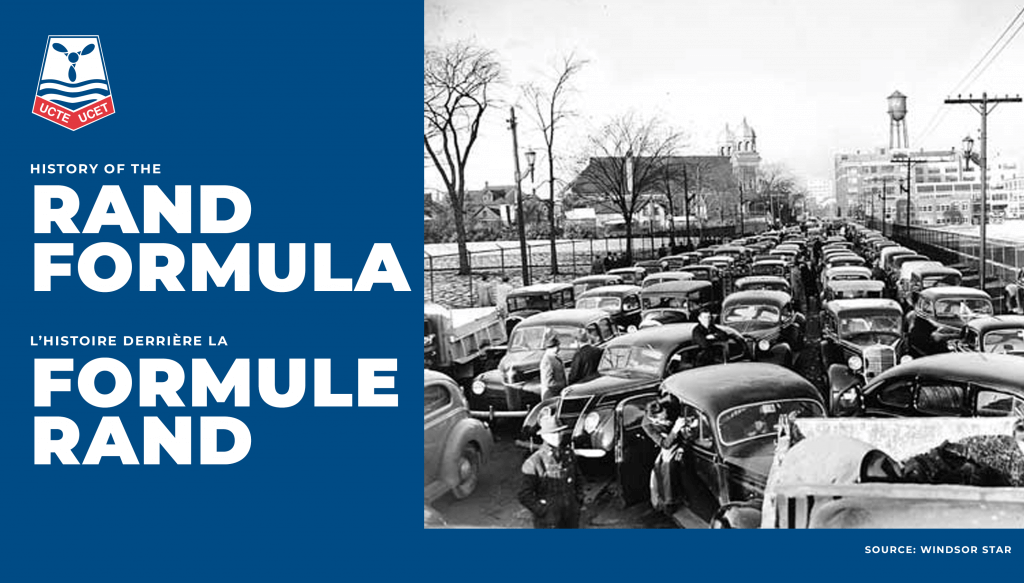History of the Rand Formula
It all started with a strike in Windsor, Ontario. A decision had just been made regarding labour relations. On January 29, 1946, the same year that World War II ended, Justice Ivan Rand of the Supreme Court of Canada was asked to act as an arbitrator to resolve a major strike, which had reached an impasse at the Ford Motor Company plant in Windsor from September to December 1945.
In the aftermath of World War II there was a major labour shortage, specifically in Canadian manufacturing plants. When the soldiers returned home, labour was suddenly plentiful again. The United Auto Workers (UAW) at Ford’s Windsor plant made it their mission to fight to retain and strengthen the power and influence they had gained over the past few years. At issue was whether the plant would become a closed or open union shop.
Judge Ivan Rand decided to compromise. In his arbitration decision, the judge stated:
… rejects the Union’s demand that the Ford plant be made a closed union shop. However, all workers in the bargaining unit — whether or not they are actually union members — must contribute funding in the form of union dues to enable the Union to pay bargaining costs and administer the labour contract[1].
Justice Rand recognized that not all employees should be required to join a union, however those that were excluded should not receive the wages and benefits negotiated in a collective agreement.
Also at that time, unions had to queue at the front door of a plant to collect employee dues however the adoption of the Rand Formula changed all of that. It was now the company’s responsibility to deduct a certain amount of employees’ wages which was to be paid to the union in the form of dues.
It also set out rules for strikes. For example, before this decision, legal strikes could be violent and even illegal in some cases. The decision led to the adoption of financial penalties for workers and their Union whenever they took part in illegal work stoppages. For employees, these penalties could take the form of daily fines and loss of seniority; for the Union, the suspension of union dues[2].
Judge Ivan Rand’s decision made history. It guaranteed a future for unions and the opportunity to make extraordinary advances. Financial security allowed them to set up programs to help employees enforce their rights.
[1] https://www.thecanadianencyclopedia.ca/en/article/rand-formula
[2] https://www.thecanadianencyclopedia.ca/en/article/rand-formula
